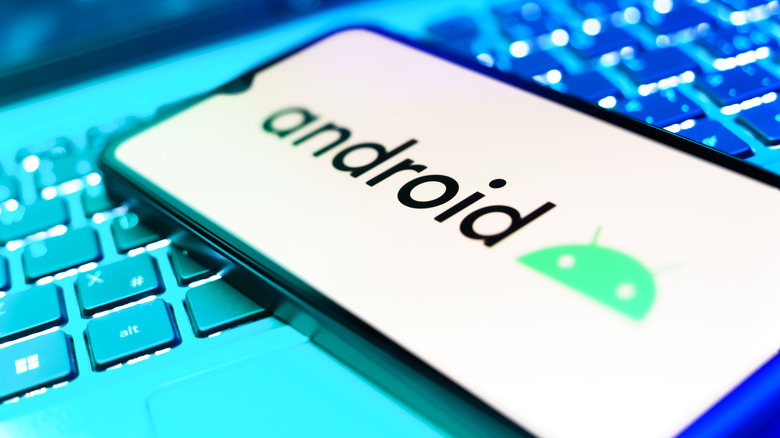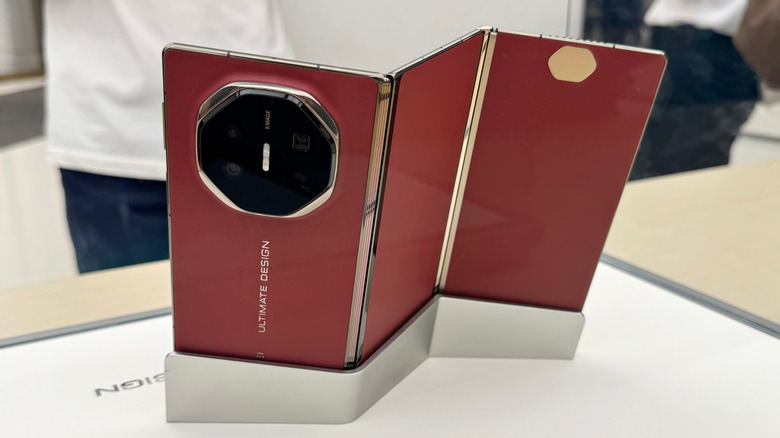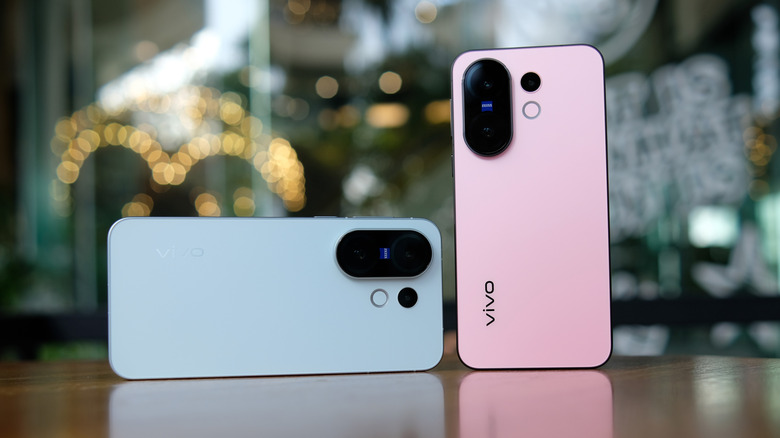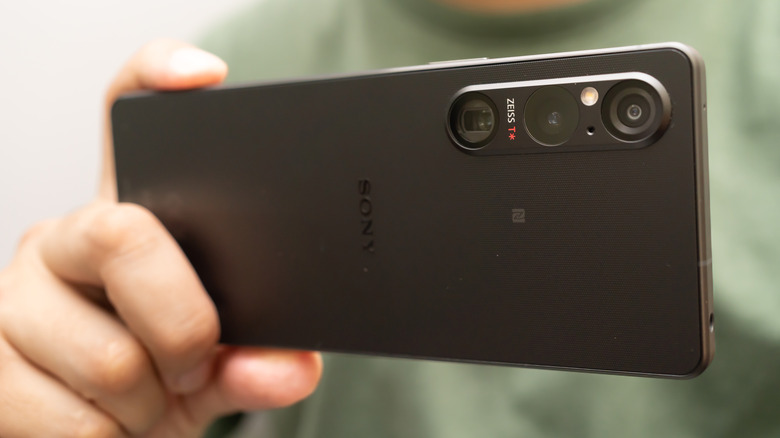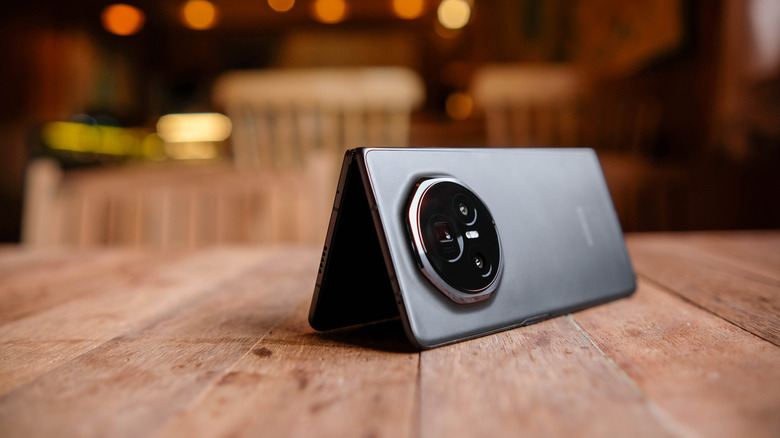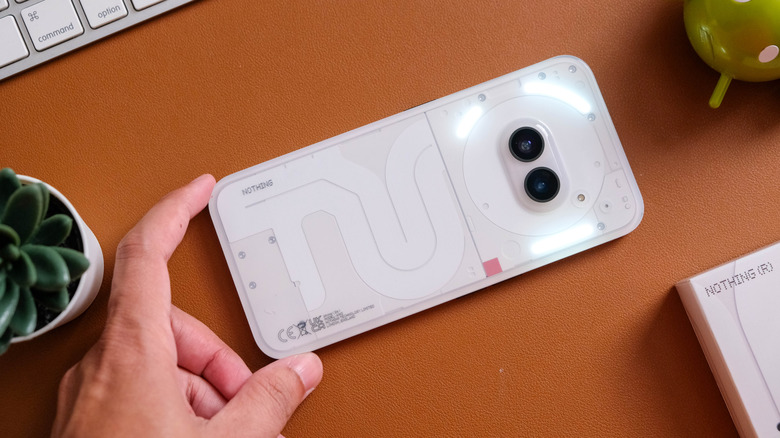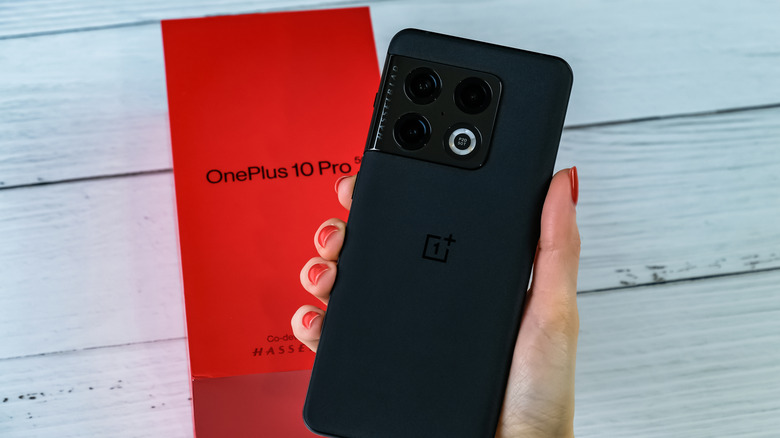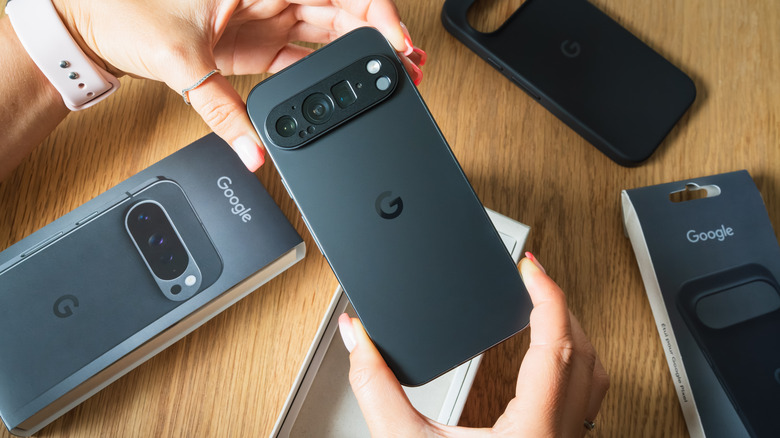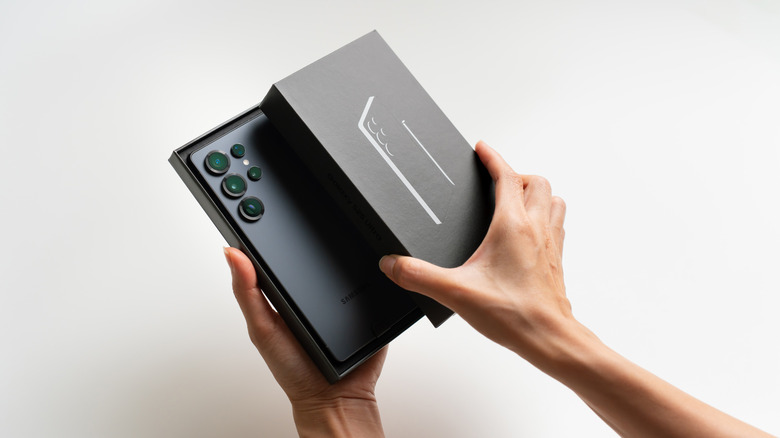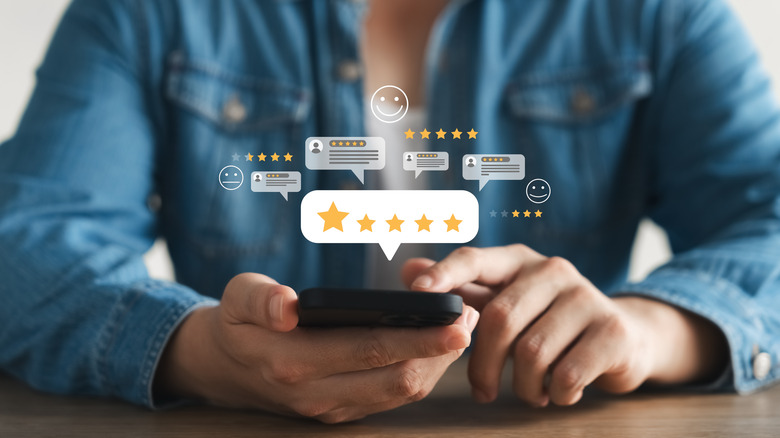Every Major Android Phone Brand Ranked From Worst To Best According To Users
We may receive a commission on purchases made from links.
The Android versus iPhone argument has been around forever, and honestly, it's getting boring. Everyone's already picked a side. What's more interesting now is what's happening inside the world of Android itself. Because if you've ever used two Android phones from different brands, you know they don't even feel like the same species.
A Samsung owner swears their phone is perfect. Someone with a Vivo thinks theirs takes better photos. Then there's that one Motorola fan who doesn't care about features as long as the battery lasts three days. Digging through tech reviews, forums, and verified buyer reviews revealed surprising, and not-so-surprising, insights. Some brands rank higher than their reputation suggests, while others boast impressive spec sheets but fall flat when it comes to software. At the end of the day, every user's chasing something different, but that's the beauty of Android — you have near-unlimited choices.
The rankings you'll see here reflect what users value most. Whether that's reliable hardware, clean software, timely updates, or accessible customer service. And if you're wondering how we pulled the data together, there's a short section that explains our methodology at the end.
Motorola
Motorola phones run a nearly stock version of Android, which means you're not dealing with bloatware or a crowded user interface. Its flagship Razr Ultra has a huge battery and great performance, showing that the company can still pull off interesting hardware. Plus, its mid-range phones are reasonably affordable, and the battery life tends to hold up across most models.
However, one problem that keeps coming up among users is the painfully slow software updates. In fact, it's a fairly common sentiment on Reddit that "you don't buy Motorola for timely updates". Many users aren't particularly interested in new features, but late security patches are a strong concern. Motorola does maintain official update channels and eventually delivers on its promises. It's just that eventually is an awfully long time for a lot of users.
Motorola fans seem to be okay with this arrangement. They've accepted that slow updates are the price you pay for everything else the brand does well (battery life, display, performance on light usage). Whether that trade-off works for you depends on how much you care about the latest Android features versus getting solid hardware at a fair price.
Huawei
Huawei launched the world's first tri-fold smartphone, the Mate XT, in September 2024. When fully unfolded, it becomes a 10.2-inch tablet, and its design earned recognition from tech reviewers. Its camera systems remain competitive, with the Mate XT featuring a 50MP primary camera that automatically adjusts aperture, a 12MP telephoto lens offering 5.5x optical zoom, and an ultra-wide lens.
While it offers impressive hardware, the real issue happens when you turn the phone on. HarmonyOS NEXT has dropped all Android compatibility, which means it won't run Android apps. The HUAWEI AppGallery provides over 20,000 apps, but most Western software isn't there. You can try workarounds, but they cause problems with notifications not arriving on time, limited file access, or apps simply not running. Yet, these limitations have not deterred users outside of China who favor the brand for its build quality.
U.S. sanctions from 2019 forced this entire shift away from Google services. Huawei reclaimed significant market share in China, holding 19% as of early 2025. Outside China, however, finding Huawei phones can be difficult, and their non-compatibility with Android could lead to a poor user experience.
Vivo
Vivo's main selling point is cameras paired with competitive pricing. The X200 Pro flagship packs a 50 MP main sensor, a 50MP ultra-wide angle, and a natural 3.7× optical zoom. Even budget models like the Y30 include quad-camera setups with ultra-wide and macro lenses. If you're purely into mobile photography, Vivo is a strong rival to camera-specific brands like Google Pixel.
User opinions on Vivo are polarized. Many have reported laggy 4K videos, random crashes, stuttering on 120Hz screen refresh, and overheating issues on some models. Some of these issues were resolved with software updates, and a good number of users are happy with the prices of mid-range models. But the biggest problem with the Vivo brand is the Funtouch OS. Vivo's Android skin forces you to agree to data collection terms before you can open basic apps like the camera or photo gallery. Users also report bloatware that cannot be uninstalled and consumes storage space, in addition to noting that Vivo phones have poor resale value, with prices dropping by half mere months after release. If you're not drawn to Vivo's specific camera processing or don't mind dealing with its software quirks, better value can be found elsewhere.
Oppo
Just like Vivo, Oppo takes cameras seriously. Oppo's Find X8 Ultra currently ranks third in DXOMARK's smartphone camera rankings, and even its mid-range phones pack impressive imaging hardware, with excellent low-light performance and powerful AI processing.
Oppo receives criticism from users for its Color OS, which ships with over 20 pre-installed apps. This includes several third-party apps you probably don't want, including Oppo's own Hot Apps folder that automatically downloads more software if you agree to its terms. Many of these apps can't be uninstalled without technical workarounds, and they use up storage space while pushing notifications you didn't ask for.
Software updates depend heavily on which phone you buy. The latest flagship Find models will receive five major Android updates and six years of security patches. But most mid- and low-range phones will only receive two to three years of updates. Oppo is also more expensive than some competitors because it doesn't make its own processors, relying instead on MediaTek or Qualcomm chips.
Sony
Sony Xperia phones occupy a small but loyal niche. Fans praise the company for keeping features most brands don't offer anymore, such as the 3.5mm headphone jack across the entire lineup. Its phones support high-resolution audio, LDAC wireless codec, and Dolby Atmos, with users praising the sound quality on the Xperia III & IV. The Xperia 5 V camera is another strong point for the brand, especially with the dedicated shutter button and manual controls similar to Sony's professional camera systems.
The software support is where Sony falls short. Its current policy guarantees only two major Android updates and up to three years of security patches, although the Xperia 1 VI now offers three updates and four years of security patches. When you're paying $ 1,000 or more for a flagship phone, receiving just two Android updates feels inadequate.
Limited availability compounds the problem. Sony phones are hard to find in many markets, including much of the United States. Its global market share continues to shrink, which raises questions about long-term support even beyond its already limited updates. If audio quality or manual camera controls are your top priority, Sony is an option. But the short software support at a premium price makes it difficult to recommend for most buyers.
Honor
Coming in at 9.3mm when folded, the Honor Magic V5 is one of the world's thinnest foldable phones. Beyond foldables, though, Honor has established itself as a value-focused brand that offers strong hardware at mid-range prices. Their phones typically pack high-end Snapdragon and MediaTek processors, large batteries, and decent camera systems without premium price tags. Users especially love the long battery life and ultra-fast charging speeds.
Software support massively improved in early 2025. Honor announced its Magic series phones will receive seven years of Android updates and security patches, matching Samsung and Google's flagship models. Also, MagicOS Android skin is much cleaner than the cluttered interfaces from other Chinese manufacturers, but some users have reported bugs and poor battery optimization.
The primary drawback of the Honor brand is its limited recognition and availability. Honor phones aren't sold in the U.S., and in markets where they are available, resale values are lower than those of more established brands. Service stations aren't widely available, which can make repairs slower or more complicated depending on your location.
Nothing
Nothing launched in 2022 with transparent back panels featuring LED lights called the Glyph Interface. The lights function as notification indicators, ringtone visualizers, and fill lights for photography. The Phone 2 and new Nothing Phone 3 continue this design theme, which stands out in a market where most phones look identical. The company's Nothing OS is a skin on top of stock Android, with minimal modifications, and ships without pre-installed bloatware. However, users have complained about the unappealing monochromatic UI and buggy performance of native apps.
The software update commitment is quite impressive for a young company. Nothing promises three years of major Android updates and four years of security patches for its flagship phones. And the Phone (3) gets a whopping seven years of updates.
Being a newer brand, Nothing's service centers remain limited outside major markets like India. If something breaks, finding authorized repair shops or replacement parts takes longer than it would with established brands. Resale values also tend to be lower because the brand lacks recognition in many regions.
Xiaomi
Xiaomi's specialty is delivering flagship-level specs at mid-range prices. The brand directly positions itself to compete with industry giants, with the Xiaomi 13 Pro taking on the Samsung Galaxy S23 Ultra. Meanwhile, Apple's iPhone 17 Pro Max faces a strong contender in the Xiaomi 17 Pro Max. The Blackshark, Xiaomi's beastly gaming phone, features cooling systems, high refresh rate displays, and gaming-optimized software. Across the lineup, you get powerful processors, large batteries, high-resolution displays, and capable camera systems for less money than competitors charge for similar hardware.
It's not all perfect, though. MIUI, Xiaomi's Android skin, includes ads in system apps like the file manager, music player, and even the settings menu. Pre-installed apps clutter the interface, and while you can disable some of them, others are more difficult to remove. The company makes money from this advertising ecosystem, but it goes without saying that users find it annoying and disruptive.
Software updates also vary wildly by region — users in China often receive updates before people in other markets. Xiaomi does not provide strong support guarantees for its smartphones, offering only two years of updates and sporadic security patches. However, some select models, including flagships, are eligible for up to four years of Android updates.
OnePlus
OnePlus built its reputation on killer phones that undercut Samsung and Apple while matching performance. People consistently report getting flagship-level performance and cameras while spending much less than they would on a Samsung Galaxy or iPhone. Nowadays, the value gap has narrowed — the OnePlus 12 launched at $799, putting it closer to conventional flagship pricing.
The Oxygen OS has remained strong, though. The software runs smoothly with minimal lag, fast animations, and a clean interface that isn't much different from stock Android. Users consistently praise the responsiveness and polish. One Reddit user described OxygenOS 16 as "damn smooth and amazing," highlighting the customizations and performance.
OnePlus also offers four major Android updates and five years of security patches for flagship models, matching Samsung and Google's support timelines. The cameras have improved significantly from earlier generations, although they're still slightly behind those of Samsung and Google. OnePlus may now cost flagship prices, but you also get flagship-quality software and great hardware.
Google Pixel
Google Pixel phones offer the cleanest Android experience available. After all, they're developed by the same company that owns Android. You get software updates the moment Google releases them, often months before other manufacturers push them out. The camera consistently ranks among the best in the industry, with better night shots and portrait mode results than most competitors. Features like Magic Eraser, Best Take, and real-time translation run exclusively on Pixel devices before eventually coming to other Android phones.
Starting from the Pixel 8a, Google now commits to seven years of OS updates and security patches. The new Tensor G5 chip prioritizes AI processing, which means tasks like voice transcription, photo editing, and language processing happen faster and more accurately than on competing phones. Call screening, spam filtering, and voice-to-text transcription work seamlessly without sending data to Google's servers.
The spec sheet states that the 4,700mAh battery is good enough, but some users on Reddit tell a different story. The battery life is simply not good enough. The Google Pixel 10 barely makes it through a full day with moderate use. Some users also report overheating during heavy usage, likely due to the Tensor chip.
Samsung
Xiaomi skipped the 16 series to match iPhone releases. Google Pixel 10 wants to be the iPhone for Android users. But only Samsung truly competes head-to-head with Apple, matching and often surpassing the iPhone. Samsung ranked first in customer satisfaction among cellphone manufacturers in 2025 and holds the largest Android market share globally. The flagship Galaxy S25 series and foldables, such as the Z Fold 6, consistently earn praise for display quality, camera performance, battery life, and overall value for money.
Samsung's service network is the most extensive of any Android manufacturer, with authorized repair centers globally and readily available replacement parts. The software support matches Google's commitment of seven years of Android updates and security patches for flagship devices. One UI includes features like DeX mode that turns your phone into a desktop computer, Good Lock for deep customization, and a complete ecosystem of watches, earbuds, tablets, and smart home devices that sync seamlessly.
The biggest barrier to entry is the pricing. The Galaxy S25 Ultra starts at $1,299, and the Z Fold 7 costs up to $2,419. Mid-range A-series phones offer better value but receive fewer years of updates. Samsung delivers the most comprehensive Android package, featuring excellent hardware, mature software, extensive service coverage, and long-term support that justifies the premium pricing for users who can afford it.
How we ranked these brands
First, we determined major Android phone brands based on global and U.S. market share data, then evaluated user sentiment from multiple sources. Reddit discussions gave us direct feedback from Android users on their preferences, experiences with different brands, and recommendations for high-end devices. We also analyzed user reviews and comment sections on tech blogs and dedicated mobile phone review sites, where real users share their experiences with devices.
Finally, we factored in ratings and reviews from verified purchasers on Amazon and phone stores to capture feedback from everyday consumers. This combination of market presence, forum discussions, professional review feedback, and verified purchase ratings gave us a complete picture of how users actually perceive each brand's strengths and weaknesses beyond marketing claims.
